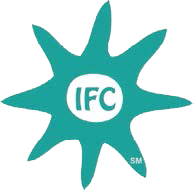Healthcare as an industry has by and large left the era of in-person interactions. Except for emergency situations, almost all healthcare contact now involves navigating some kind of digital interface, whether it is scheduling an appointment, having a ‘conversation’ with a medical provider via an online portal, or receiving medical support via a teleheath service.
This technology has been rolled out unilaterally by a healthcare establishment for which it makes perfect business and management sense. From the institutional perspective, digitization ‘rationalizes’ systems and operations, promotes efficiency, and generates useful data. From the patient perspective, the experience is not necessarily so sanguine. This is especially true for older persons – those over the age of say, 60 – most of whom grew up in an analog world and many of whom have difficulty navigating complex online portals and mastering ever-changing digital devices.
That’s why it is worth mentioning a new book by Nicole Turner Lee, “Digitally Invisible: How the Internet is Creating a New Underclass.” It seems that little thought is being given to who is being left behind as we continue to navigate a hyper-connected society. I can say both from personal experience and my interactions with others in my age cohort that many older people are being left in the online dust.
The technology divide disproportionally affects older people regardless of race or background, although the more affluent likely have better access to internet connectivity. Culturally, many members of this population are strangers in a strange land when it comes to high-level digital dexterity, and online healthcare access increasingly requires high levels of digital dexterity (not to mention significant educational and literacy capabilities for a generation whose standard of educational attainment was a high school diploma).
When older people do get to interact with a provider and field the usual questions about new symptoms or problems with medications, etc., why aren’t we asked about barriers to online access and services? It would seem that since so much information is shielded by a password protected fortress of digital technology, providers would want to know that the patient has the tools and abilities to overcome these barriers.
For older people and their caregivers, access to and comprehension of online medical records is critical. Yet many older people haven’t even set up access to their online records. Older people are the heaviest users of healthcare services and over the next two decades our elderly population will continue to grow. This mismatch between patient capacity and the system’s technology demands will be a growing problem that promises to enlarge and harden ongoing healthcare disparities.
-Willetha
